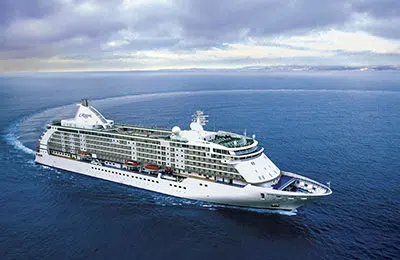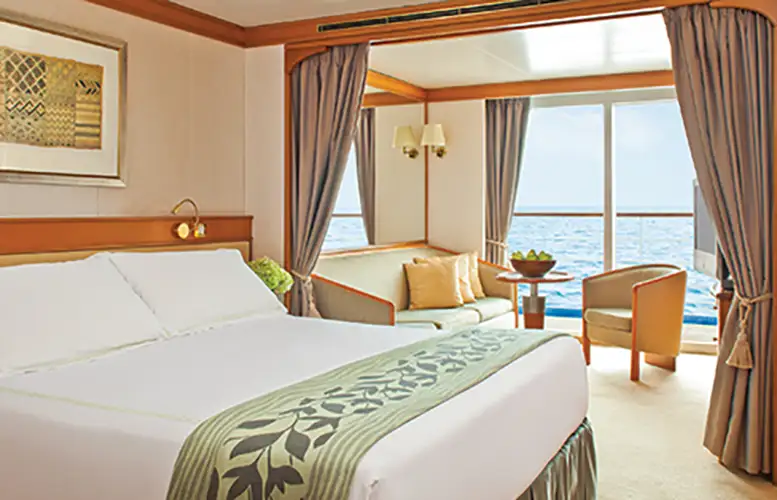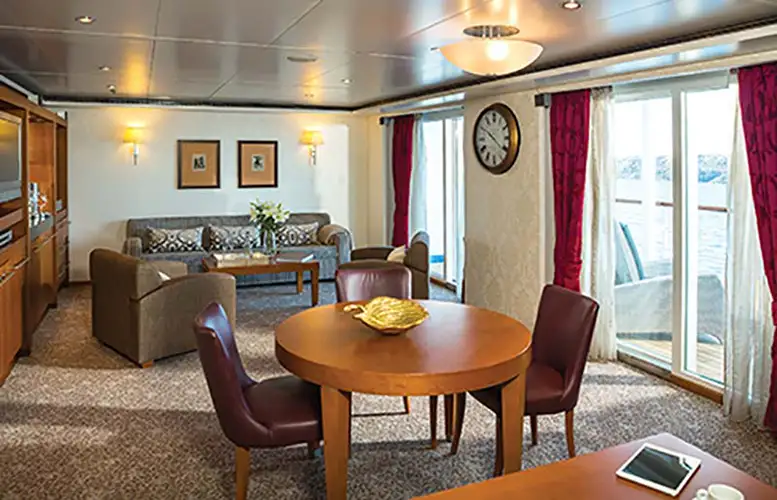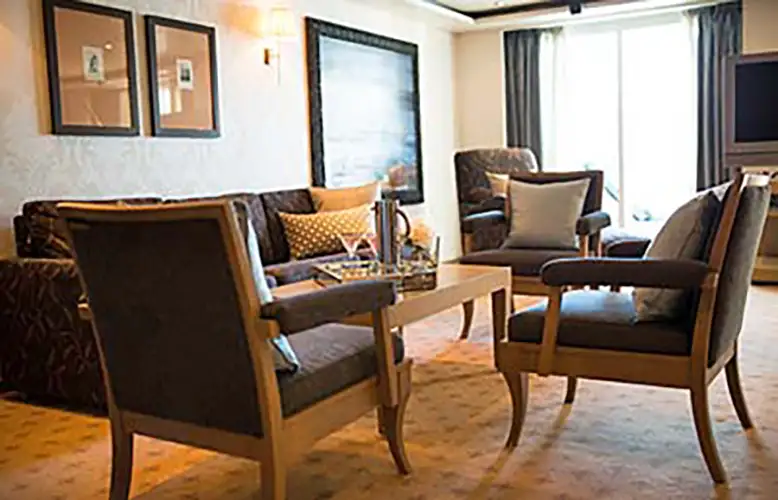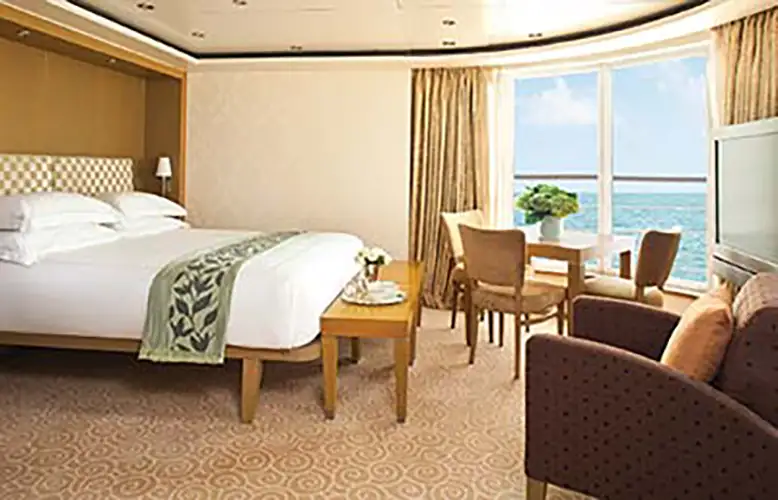Regent Mediterranean: 12 nights from Istanbul with Seven Seas Voyager
Jun 28, 2026
Turkey, Greece, Croatia, Montenegro, Italy, Malta
Cruise itinerary
Departure Port: Istanbul ➞
Landing: Civitavecchia
-
Sunday, June 28, 2026 - 5:00 PMIstanbul
-
Monday, June 29, 2026 9:00 AM - 6:00 PMMitilene
-
Tuesday, June 30, 2026 8:00 AM - 5:00 PMEphesus
-
Wednesday, July 1, 2026 8:00 AM - 5:00 PMHeraklion
-
Thursday, July 2, 2026Navigation
-
Friday, July 3, 2026 8:00 AM - 6:00 PMDubrovnik
-
Saturday, July 4, 2026 8:00 AM - 4:00 PMKotor
-
Sunday, July 5, 2026 9:00 AM - 6:00 PMKorfu
-
Monday, July 6, 2026 8:00 AM - 5:00 PMCrotone
-
Tuesday, July 7, 2026 10:00 AM - 7:00 PMValletta
-
Wednesday, July 8, 2026Navigation
-
Thursday, July 9, 2026 7:00 AM - 7:00 PMSorrento
-
Friday, July 10, 2026 7:00 AM 7:00 PMCivitavecchia
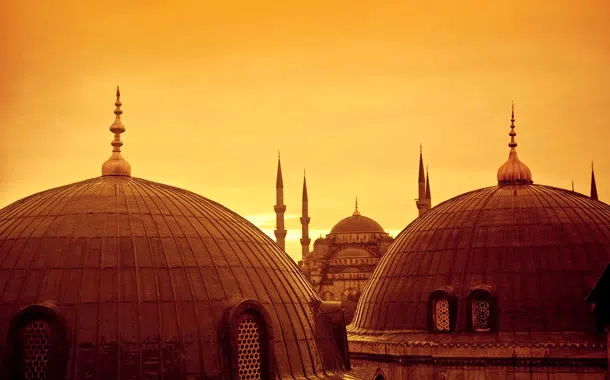
Istanbul
An incredible city, huge, vibrant like few others in the world. Where two continents meet, culture and diversity thrive in a unique architectural setting. Istanbul is hot,and we aren’t talking about the weather. These days there are more restaurants,bars,galleries and clubs around the city than Ottoman mosques(which is not a small feat).
The international fashion and design press has talked about Istanbul to the point of exhaustion; the sense of age that fell over the city once the Ottoman empire disappeared, has been replaced by a sense of energy and innovation not seen since the times of Suleiman the Magnificent.

Mitilene
Mitilene is an ancient Greek city, with origins dating back to the 11th century BC. The city is the capital and port of the island of Lesbos, which is located in the north-east of the Aegean Sea. Lesbos has an area of about 1,632 km², with 320 km of coastline, making it the third largest Greek island. The city of Mytilene is located on the south-east coast of the island. It has a large number of neoclassical buildings, public and private homes. Among these, the Prefecture of Lesvos, the old town hall, schools and various houses and hotels that dot the city. The Baroque church of San Therapon, with its imposing style, overlooks the port. Its construction began in the 19th century and was completed in 1935. The port of Mytilene offers navigation services to the nearby islands of Lemnos, Chios and sometimes Dikili Ayvalik in Turkey. It also serves the continental cities of Piraeus, Athens and Thessaloniki. The island has a series of attractions, including cultural (ancient remains), geological, gastronomic and religious. Lesbos was also known, in ancient times, for the quality of its wines, its timber, for ships and for its famous light blue marble. Do not miss the superb Kastro, a fortress built by Emperor Justinian in 527. It houses the ruins of the Gatezulli palace and a Byzantine cistern. If you are a history enthusiast, the archaeological museum is full of mosaics and numerous Neolithic objects. The island's airport is named after the contemporary poet Odysseus Elytis. Lesbos (in Greek: Λέσβος, Lesbos) is a Greek island located in the north-eastern Aegean, in front of the coasts of the Anatolian peninsula. The main center is Mytilene. It is famous for having given birth, in the 7th century BC, to the lyric poets Alcaeus and Sappho. In Sappho's verses we find the exaltation of the beauty of femininity and eros between women, hence the term lesbianism. With an area of 1,630 km² Lesbos is the third largest Greek island by surface area and the eighth in the Mediterranean. Characterized by a conspicuous coastal development (320 km), it has a population of about 90,643 inhabitants at the 2001 census[1], a third of whom reside in the capital Mytilene. From an administrative point of view it is a municipality and peripheral unit consisting of the only homonymous municipality in the periphery of the Northern Aegean.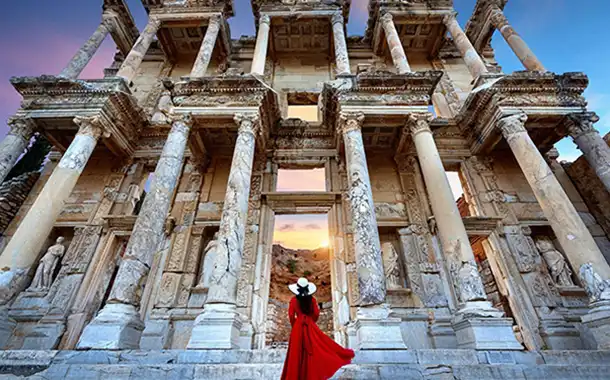
Ephesus
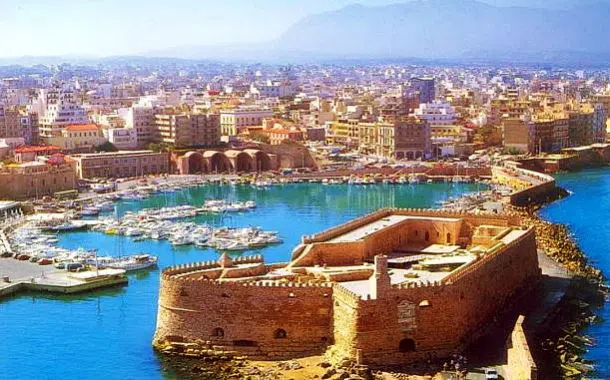
Heraklion
Heraklion is the capital of Cray. It is the largest port and economic center of the island and the third largest city in Greece. This city hosts the archbishop of the Greek Orthodox Church and has religious buildings of great interest.
Heraklion is located in the center of the northern coast of the Greek Islands. With more than 100,00 inhabitants, the city is the capital of Crete, a Venetian fortress during the Middle Ages. The ancient city, with its squares and wide cobbled streets, balconies with wonderful view on the sea, mantains numerous fortifications. In particular there are important and magnificent monuments such as the Church of Agia Ekaterini, dated back to 1555, where the Museum of Sacred Art is hosted. The Archaeological Museum, home to ceramic sculptures, jewellery and frescoes on the Minoan culture. The Historical Museum, home to the only exhibited work of the painter Domenico Theotokopoulos (The Greek), and where you can have a view of Mount Sinai. The Cathedral of St Mena, the patron saint of the city, built between 1862 and 1895 is one of the largest buildings in the area.
Heraklion has an important port and a considerable center for the coastal trade of oil, soap, wine and hides. It has ferry boats and ships with regular itineraries to the islands of Santorini, Ios, Paros, Mykonos, Rhodes, Karpathos and Syros. There are also several daily ferry bgoats to Piraeus, south-west of Athens. The Venetian fortress, still in perfect condition, protects the entrance to the port.
The large combination of reality and mythology, tradition and modernity, make Herklion a cosmopolitan center and one of the most important tourist destination in the Mediterranean. Great beaches, lively nightlife, sunny people, excellent cuisine and the strange "interplay" between the old and the new, guarantees to tourists an unforgettable holiday.
Heraklion is located in the center of the northern coast of the Greek island. With more than 100,000 inhabitants, the locality is the capital and largest city of Crete, a Venetian stronghold during the Middle Ages.
The ancient city, between squares and wide cobbled streets, balconies overlooking the sea, preserves numerous fortifications. Particular importance and beauty are its magnificent monuments such as: the church of Agia Ekaterini, dating back to 1555, is where the museum of Sacred Art is housed. The Archaeological Museum, home to ceramic sculptures, jewelry, and frescoes on Minoan culture. The Historical Museum, home to the only work on display by the painter Domenico Theotokopoulos (El Greco), and where it is possible to have a view of Mount Sinai. The Cathedral of Saint Mena, patron saint of the city, built between 1862 and 1895, is one of the largest buildings in the area.
Heraklion has an important port and a considerable center for the coastal trade of oil, soap, wine, and hides. It has ferries and boats with regular routes to the islands of Santorini, Ios, Paros, Mykonos, Rhodes, Karpathos, and Syros. There are also several daily ferries to Piraeus, southwest of Athens. The Venetian fortress, still in perfect condition, protects the entrance to the port.
The great combination of reality and mythology, tradition and modernity, make Heraklion a cosmopolitan center and one of the most important tourist destinations in the Mediterranean. Large beaches, intense nightlife, sunny people, excellent cuisine, and the strange "game" between the old and the new, assures tourists an unforgettable vacation.
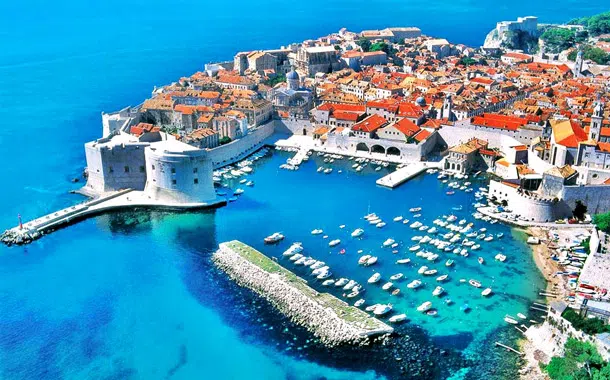
Dubrovnik
Dubrovnik is definitely special. A magnificent curtain wall surrounds marble streets and Baroque buildings exude a pearly light in the Adriatic sun.
Picturesque and artistic, Dubrovnik is a tourist hotspot and port in southern Dalmatia, at the foot of the Srđ mountain. From a historical and cultural point of view, it has been included in the list of UNESCO World Heritage Sites.
Thanks to its beauty and everything it has on offer for tourists, Dubrovnik is one of the most attractive destinations in the Mediterranean, so much so that the city can be visited all year round. In addition to its world-famous architectural heritage, this place has beautiful rocky beaches, pebble beaches and sandy beaches, enjoys a Mediterranean climate and also has lush vegetation. The main pedestrian street, Placa, is a melange of cafes and shops with monuments at each end.
Churches, monasteries and museums adorned with finely carved stone, recall an eventful history and a rich artistic tradition. Beyond the city there is a paradise of beaches, wooded peninsulas and a crystal-clear sea dotted with lush islands.
The city is also known for its delicious cuisine and its infrastructure of hotels for tourists. The city offers a wide selection of first-class restaurants, numerous sport and leisure activities, as well as cultural and entertainment events
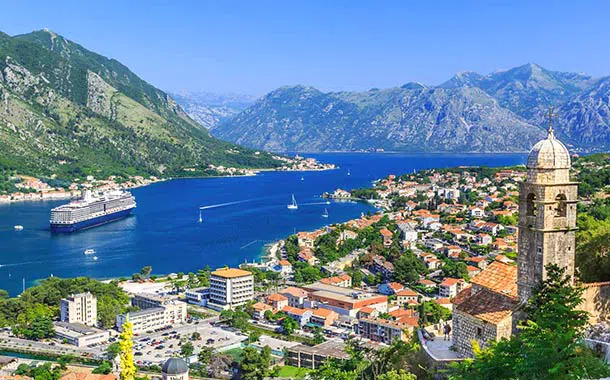
Kotor
The Adriatic Sea penetrates the jagged coast of Montenegro and winds between high mountains until it meets the exquisite and walled medieval city of Kotor.
Along the Adriatic coast of the former Yugoslavia, we find one of the most unique and fascinating European coastal areas, the city hidden in Montenegro, Kotor.
Located at the bottom of a bay, the beautiful medieval city of Kotor is considered a Mediterranean location surrounded by cliffs and an interesting historic wall. The tourist attractions of Kotor are easily reached with a pleasant walk. This small walled city, declared a UNESCO World Heritage Site, has compact dimensions that make it comfortable and easy to visit.
The central part of Kotor was built between the XII and XIV centuries. A historic center surrounded by a rather thick wall, four and a half kilometers long and fifteen meters high. This immense fortified wall reaches the bastion of Sveti Ivan (San Giovanni).
Inside the walls, it preserves an urban network cut into the stone. Its most emblematic work is the Cathedral of San Trifone, built in the 12th century. Inside the church it contains objects and frescoes sculpted during the 14th century. Furthermore, The Orthodox Church of San Nicolas, built between 1902 and 1909 in neo-Byzantine style and that of San Luca (13th century) built in Romanesque and Byzantine style.
Together with the churches, the city includes many palaces that tell its history: the Maritime Museum, located in the Grgurina Palace, a splendid baroque building located in the historic center of the country. The Drago house, with its beautiful Gothic windows, the Prima building, where Renaissance and Baroque lines are combined, the Ducal Palace and the Bizanti, both from the 17th century and the Napoleonic theater in the 19th century.
In Kotor, it is very common to see locals located along the rocky coast in the lower part of the city. In the old part of the area you will find many shops and restaurants that will delight your eyes. This location is the classic ideal city to spend quiet days or for a romantic getaway.
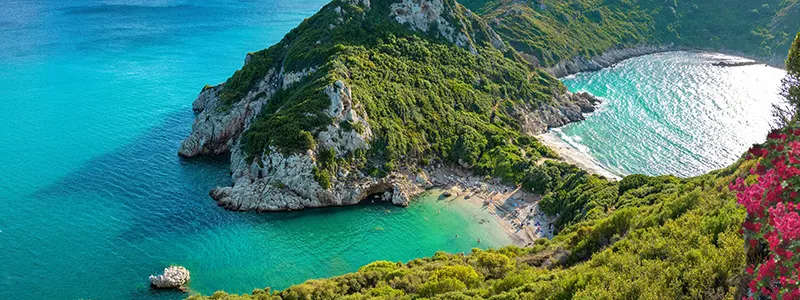
Korfu
Corfù is a Greek island in the Ionian Sea, located off the northwestern coast of Greece and south of Albania. The Greek island is a natural paradise. It is the second largest island of Greece, with 220 km of coastline. Its geography is dominated by mountain ranges and reaching 1000 meters above sea level, you will find Mont Pantokrator.
This mountain divides the island into three different areas. The northern area, abundant in olive groves, features green valleys and coastlines that form both small and large bays. The central part, the most populous and important, is covered by dense vegetation and lush hills.
The southern area consists of a large plain with less vegetation than the other regions but is decidedly more fertile. The most lively part of the city is found at Liston, similar to Paris’ Rue de Rivoli- a grand avenue lined with beautiful cafes and excellent restaurants. On the other hand, the island also has beautiful beaches washed by the Ionian Sea.
One of the most beautiful walks in the capital is along the harbor promenade, next to the city walls, where you can contemplate the view of the city. Corfù was the first Greek Island to open its doors to tourism, becoming an important international tourist centre that attracts many visitors every year. Even if tourism is evident in the coastal areas, the island has managed to preserve its authenticity.

Crotone
Crotone (Cutroni in the Crotone dialect) is an Italian municipality with 60,741 inhabitants, the capital of the province of the same name in Calabria. It is the fourth municipality in the region by population and the sixth by area.
The city of Crotone was founded by Greek colonists, coming from the Achaea region in the third quarter of the 8th century BC, in the place of a pre-existing indigenous settlement and represented one of the most important centers of Magna Graecia. The old city develops in a maze of narrow streets and squares up to the cathedral and the central Piazza Pitagora, the point of contact between the "old" and "new" cities.
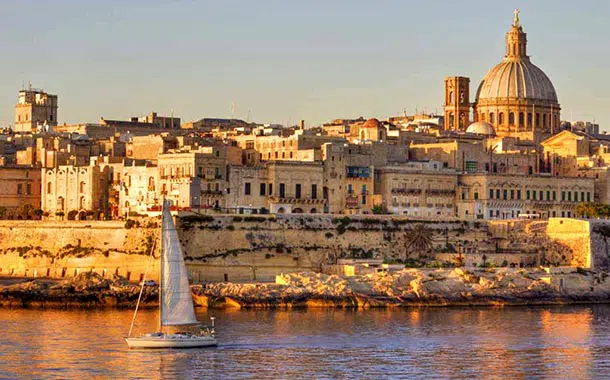
Valletta
Malta is one the smallest States in the Mediterranean. Few European countries have such a concentration of history, architecture and, beautiful beaches in such a small area. Malta is one of the most concentrated areas of historical interest anywhere in the world, for this reason it was called La Valletta when Unesco awarded it the title of World Heritage Site. The city is therefore the ideal city for art lovers and it is renowned for its massive fortifications and architectural excellence.One of the most concentrated areas of historical interest elements in the world, so La Valletta was described when Unesco awarded it the title of world heritage site, the city is therefore a guarantee for art lovers and certainly renowned for its massive fortifications and architectural excellence.
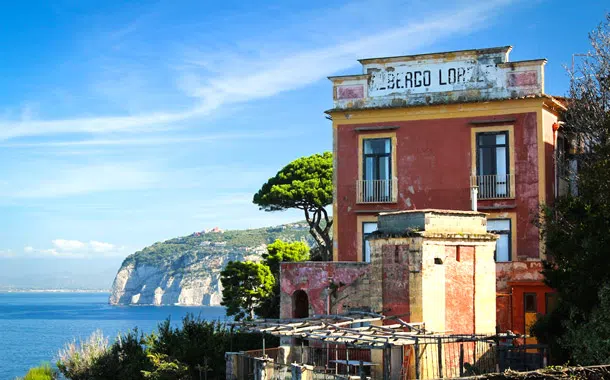
Sorrento
According to a Greek legend, it was in the waters of Sorrento that the mythical Sirens once lived. Like them, this location is able to bewitch its visitors.
Dating back to Greek times, Sorrento's strong point is its fabulous location. Straddling cliffs overlooking the Gulf of Naples and Vesuvius, it is ideally located for exploring the surrounding areas: the best of the uncontaminated countryside, the Amalfi Coast, Pompeii and the archaeological sites and the fabulous island of Capri.
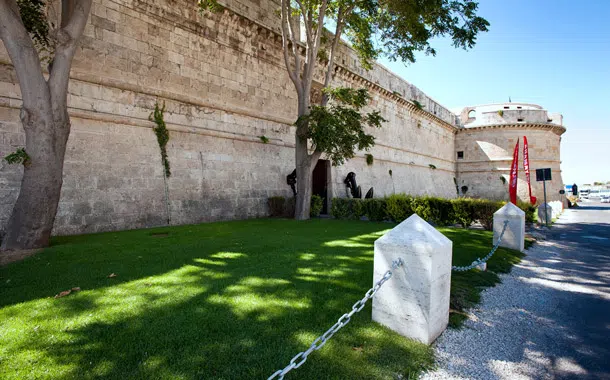
Civitavecchia
The port town of Civitavecchia is about an hour away from the Italian capital and is where ships will dock before bringing lucky holidaymakers into the city of Rome. It is an important port for cruise ships and ferries, connecting to Corsica, Sardinia and Barcelona. Civitavecchia is a town in the heart of Lazio. It is a small, sleepy town that overlooks the sea from behind the busy and chaotic commercial port.
Spreading out along the coast, the town is situated between the Mignon river to the north and the Marangone river to the south.
Civitavecchia is a port town in the heart of Italy, in the province of Rome, 80 kilometres northwest of the capital.
It is shrouded in art and history, and is rich in bays and coves with sandy and rocky beaches. Today the town is the departure point for many cruises and journeys around the Mediterranean. It is an excellent tourist destination where you can simply enjoy 'la dolce vita' or visit the amazing historical monuments. On a level with the majestic ancient capital, in terms of its monuments, gardens, villas and works of art, it also gives you easy access to the Tyrrhenian Sea, the Terme della Ficoncella, and the Etruscan ruins.
Civitavecchia will guarantee you an original and enchanting experience.
